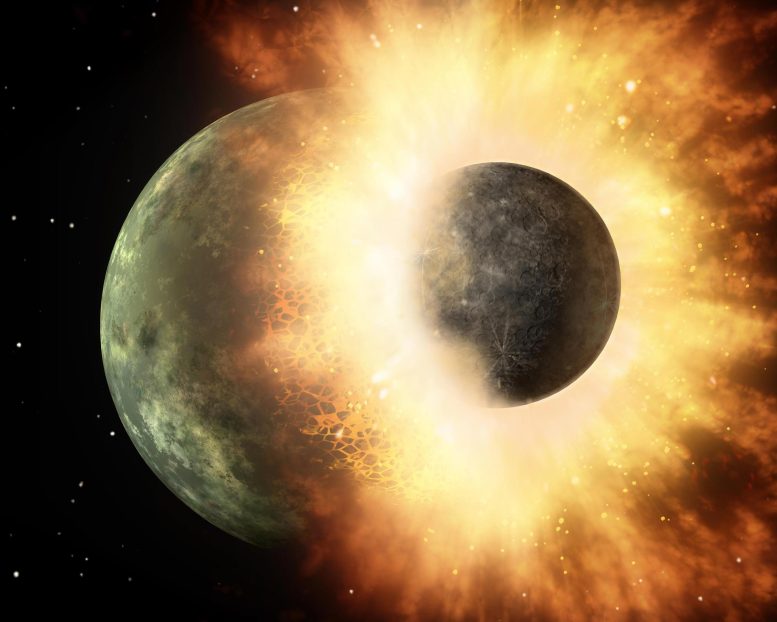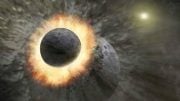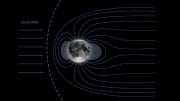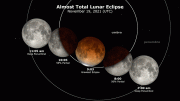
Artist’s impression of massive impact with proto-Earth. Credit: NASA/JPL-Caltech
According to a new scientific assessment, a peculiar property of the Earth’s magnetic field could help us to work out how our planet was created 4.5 billion years ago.
How did the Earth and Moon form? There are several major theories, most involving a giant impact. They range from a scenario where the impacting object strikes the newly formed Earth with a glancing blow and then escapes, through to one where the collision is so energetic that both the impactor and the Earth are vaporized.
“Our theoretical understanding of the Earth’s magnetic field today can actually tell us something about the very formation of the Earth-Moon system.” — Professor David Hughes, School of Mathematics
Now researchers at the University of Leeds and the University of Chicago have analyzed the dynamics of fluids and electrically conducting fluids. They concluded that the Earth must have been magnetized either before the impact or as a consequence of the collision.
This could help to narrow down the theories of the Earth-Moon formation and inform future research into what really happened, they say.
Professor David Hughes, an applied mathematician in the School of Mathematics at the University of Leeds, said: “Our new idea is to point out that our theoretical understanding of the Earth’s magnetic field today can actually tell us something about the very formation of the Earth-Moon system.
“At first glance, this seems somewhat surprising, and previous theories had not recognized this potentially important connection.”
This new assessment, published on October 24 in Proceedings of the National Academy of Sciences (PNAS), is based on the resilience of Earth’s magnetic field, which is maintained by a rotating and electrically conducting fluid in the outer core, known as a geodynamo.
Early Earth
Professor Fausto Cattaneo, an astrophysicist at the University of Chicago, said: “A peculiar property of the Earth’s dynamo is that it can maintain a strong magnetic field but not amplify a weak one.
Therefore, the scientists concluded that if the Earth’s field were to get switched off, or even reduced to a very small level, it would not have the capability to kick in again.
“It is this remarkable feature that allows us to make deductions about the history of the early Earth; including, possibly, how the Moon was formed,” added Professor Cattaneo.
Professor Hughes added: “And if that is true, then you have to think, where did the Earth’s magnetic field come from in the first place?
“Our hypothesis is that it got to this peculiar state way back at the beginning, either pre-impact or as an immediate result of the impact.
“Either way, any realistic model of the formation of the Earth–Moon system must include magnetic field evolution.”
Reference: “How was the Earth–Moon system formed? New insights from the geodynamo” by Fausto Cattaneo and David W. Hughes, 24 October 2022, Proceedings of the National Academy of Sciences.
DOI: 10.1073/pnas.2120682119









the scientists concluded that if the Earth’s field were to get switched off, or even reduced to a very small level, it would not have the capability to kick in again.
WTF did I not get more info on where magnetic FIELDS aRE MADE